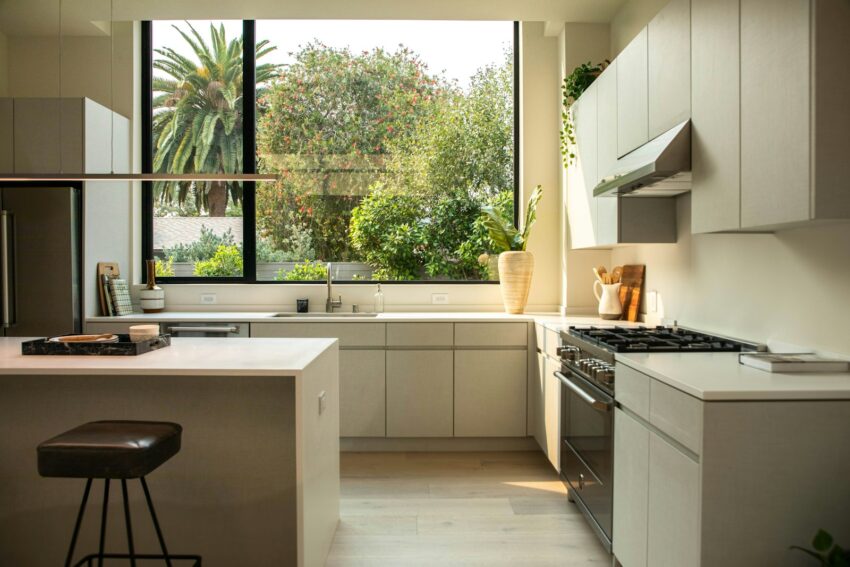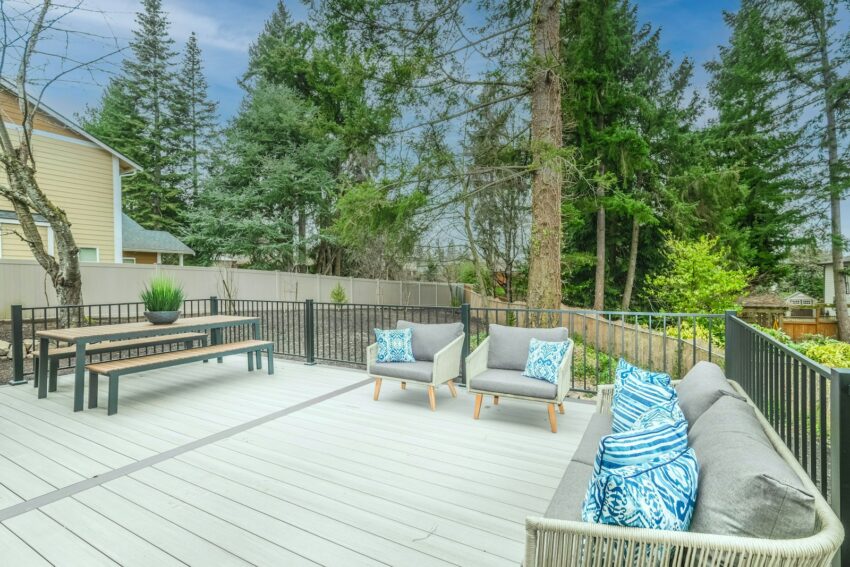It’s a classic homeowner’s puzzle: go all-in on those jaw-dropping luxury upgrades, or play it safe with practical improvements that just work? The answer isn’t as obvious as some might hope. Sometimes, the “wow” factor sells a home in a flash. Other times, it’s the basics that keep buyers interested. And with the market’s mood swings and buyers’ shifting wish lists, figuring out which upgrades actually pay off can feel like chasing a moving target.

This guide? It’s not promising magic answers, but it does dig into:
- The ROI of luxury vs. practical upgrades in today’s unpredictable market
- Which upgrades draw buyers in, and which ones send them running
- How to juggle personal enjoyment with future resale value
- A few expert tips for picking upgrades that might (just might) pay off
Quick Upgrade Guide
Tables like these always look too neat. Still, here’s what the “experts” and market watchers say, though the real world is rarely this tidy.
| Section | Actionable, Specific Takeaway |
| Best ROI Upgrades | Focus on kitchens, baths, curb appeal, and energy efficiency for the highest resale returns. |
| Luxury Upgrades That Hurt Value | Avoid over-customized features, pools, and tech overload in modest neighborhoods to prevent low ROI. |
| Practical Upgrades That Sell | Prioritize new siding, HVAC, windows, and mid-range kitchen/bath updates for broad buyer appeal. |
| Common Mistakes | Don’t over-improve beyond neighborhood standards or remove essential spaces like bedrooms or storage. |
| Market-Specific Advice | Match upgrades to local buyer expectations; luxury pays off only in high-end markets. |
| Long-Term Maintenance | Choose upgrades with low upkeep; high-maintenance features can deter buyers. |
| Energy Efficiency | Invest in heat pumps, insulation, and solar for cost savings and eco appeal. |
| Future-Proofing | Select timeless designs and flexible spaces to avoid rapid obsolescence. |
But does any home really fit this checklist perfectly? That’s up for debate.

Understanding ROI: Luxury vs. Practical Upgrades
ROI, return on investment, sounds so clinical, doesn’t it? Yet, for anyone weighing home upgrades, it’s the number that keeps popping up. The idea: spend a dollar, get some of it back when you sell. But which projects actually deliver? The answer depends on who’s buying, where, and when.
What Counts as a Luxury Upgrade?
Luxury upgrades are the show ponies: spa bathrooms, chef’s kitchens with custom cabinetry, home theaters. In high-end neighborhoods, these might be table stakes. Elsewhere? They can look out of place, or worse, like money wasted.
A marble bathroom with a soaking tub and heated floors might impress a few, but in a mid-tier suburb, most buyers just want something clean and modern. Funny how tastes (and budgets) shift from block to block.
What Counts as a Practical Upgrade?
Practical upgrades are the workhorses. Think new siding, energy-efficient windows, or a kitchen refresh that doesn’t break the bank. These changes tend to appeal to more buyers and offer a steadier ROI.
For example, swapping out tired appliances for a set of coordinated kitchen appliance packages can make a kitchen feel new, without the sticker shock of a full remodel. But is “practical” ever enough to make a home stand out?
Upgrades That Add the Most Resale Value
Every year, some upgrades top the charts for ROI. But the “winners” can change with the market’s mood, and buyers’ quirks.
Kitchen and Bath Remodels
Kitchens and bathrooms: the perennial favorites. A full-on luxury remodel with top-shelf finishes might not always pay off, especially outside the luxury market. But a mid-range update, think new counters, fixtures, and those matching kitchen appliance packages, often recoups a big chunk of the investment. In high-end areas, buyers expect the best. Elsewhere, practicality usually wins. Odd, isn’t it, how the same granite countertop can be a must-have in one zip code and a waste in another?
Energy Efficiency and Systems
Energy efficiency is having a moment. Swapping out an old furnace for a modern system from a Reznor heater can cut utility bills and attract eco-minded buyers.
Solar panels and off-grid power systems are also gaining ground, especially where energy costs are high or green living is in vogue. But will buyers pay a premium for these upgrades, or just expect them as standard soon?
Space-Saving and Multi-Use Features
Versatility is in. A Murphy cabinet bed can turn a home office into a guest room, handy in smaller homes or city apartments. Buyers like options, but do they value clever design over square footage? The jury’s still out.
Upgrades That Can Hurt Resale Value
Not every upgrade is a slam dunk. Some can actually make a home harder to sell, or worse, shrink the pool of interested buyers.
1. Over-the-Top Luxury Features
Pools, home theaters, and tech-heavy “smart” homes: tempting, but risky. In modest neighborhoods, these features might not add value, and the upkeep can scare buyers off. Over-customization (like a pirate-themed wine cellar) can also limit appeal. Is it worth the gamble?
2. Over-Personalization and Niche Spaces
Turning a bedroom into a yoga studio or expanding a master suite at the expense of another bedroom? Moves like these can shrink the buyer pool. Most buyers want flexibility, not someone else’s dream layout. But then again, sometimes a bold move pays off, just not usually.
3. High-Maintenance Additions
Elaborate landscaping, specialty finishes, or anything that screams “high maintenance” can be a red flag. Many buyers want a home that’s easy to care for, especially if they’re moving from out of town or juggling busy lives. Who really wants to spend weekends on endless yard work?
How to Choose: Market, Lifestyle, and Long-Term Value
There’s no one-size-fits-all answer. The smartest upgrades are the ones that fit the local market, suit the owner’s lifestyle, and won’t look dated in a few years.
1. Researching Your Local Market
Before spending a dime, it pays to check what’s standard in the neighborhood. Sabbat Abid, CEO at Property Saviour, puts it bluntly: “A high-end market may pay back a luxury finish, while a more modest one may gain a better return on basic improvements in curb appeal.” But who’s to say what buyers will want next year?
2. Balancing Enjoyment vs. Resale
Planning to stay put for a while? Go for upgrades that make daily life better. Selling soon? Stick to broad appeal and avoid anything too personal. It’s a balancing act, one that rarely feels perfect.
3. Maintenance and Future-Proofing
Upgrades that won’t become obsolete or a burden are usually safer bets. Timeless designs, flexible spaces, and durable materials tend to age well. But predicting what’ll still look good in a decade? That’s anyone’s guess.
Comparison Table: Luxury vs. Practical Upgrades
Tables like this always look so certain, until the market throws a curveball. Still, here’s how the numbers stack up (for now):
| Upgrade Type | Example | Avg. ROI | Buyer Appeal | Maintenance |
| Luxury | Spa bathroom | 50-60% | Niche/high-end | High |
| Luxury | Home theater | 40-50% | Niche | High |
| Practical | New siding | 70-80% | Broad | Low |
| Practical | Energy-efficient HVAC | 60-75% | Broad | Low |
| Practical | Murphy cabinet bed | 60-70% | Broad/flexible | Low |
| Practical | Kitchen appliance packages | 60-70% | Broad | Low |
| Practical | Off-grid power system | 60-70% | Eco-conscious | Low/Medium |
But will these numbers hold up next year, or even next quarter? Market watchers aren’t betting the farm.
FAQs
Do home improvements increase appraisal value?
Practical upgrades like new HVAC, windows, and kitchens tend to show up in appraisals. Luxury upgrades? Not always. Appraisers can be a tough crowd.
Which home improvements have the best ROI?
Mid-range kitchen and bath remodels, new siding, and energy-efficient upgrades usually top the list. But what if the next trend is something totally different?
Are luxury upgrades worth it for resale?
Only in high-end markets where buyers expect them. Otherwise, practical upgrades tend to win. But who can predict the next big thing?
